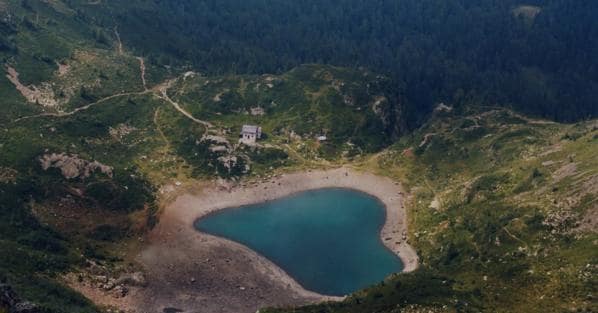Literary Trentino: Reading the Alps Like the Pages of a Book
[ad_1]
The charm of Trentino Mountain. Word by Thomas Mann, one of the finest witnesses to the literary value of the summer voyage which, from the time of the Grand Tour until today, has always found in the beauty of the landscapes of the Alps and the Dolomites, in the frankness of the green plateaus, in the warmth of the villages and the transparency of the lakes a source of inspiration. Only author Tonyo Kruger At the turn of the twentieth century, Riva del Garda chose to write in front of the magnificent panoramic view of the largest lake in Italy. Today, like Man, you can go and admire Varun Waterfall by following the geological trekking path that goes down into the rock between stairs and bridges. Even Franz Kafka, although he did not travel much, twice reached Riva del Garda (where he settled Gracchus the hunter): His description of the port and the main square is comparable to today’s reality. The place where Lake Garda is set and to which Johann Wolfgang von Goethe devoted so many pages in his book certainly remained very lyrical. I travel to Italy, In particular to Valle di Santa Lucia among the olive trees of Torbole.
For Goethe, as well as for Rainer Maria Rilke, Arco with Torbole was a happy destination: Kurort (Spa) of the Austro-Hungarian Empire was also liked by Archduke Albert of Habsburg, who wanted to build a villa and plant a garden of trees, now secular, the present Parco Arciducali Arboreto, to be visited with the chapel of S. Apollinare and the castle of Tino. Walk along the Rilke Promenade from Piazza San Giuseppe, up the slopes of the rock on which the palace stands among olive trees and thriving vegetable gardens, towards the sanctuary of Santa Maria de Lagale and the historic Via Croces.
«An enchanted forest of old larch, with a light green fleece, stands on an emerald cliff. Under the moss should live white and purple crystals. In the midst of the forest, a stream that leaped from a rock looked like a great silver comb »: in the story ashen, from 1921, seems to actually travel in the Valle dei Mocheni, between the mountains of Pizzo Alto, Monte del Lago, Cima di Cave and Sopra Conella, where the author, Lieutenant Robert Musil, lived for a whole year when he was in Europe raging during the First World War , conquered by the traditions of the ancestors: he also established a relationship with the peasant woman Lena Maria Linze, who spoke in the old Bavarian dialect. This language is still alive, and Lake Ezze and Erdemolo, which I love so much, are always able to inspire, especially by adopting an itinerary Musil en bersentol which connects the literary places associated with the writer from the Palù del Fersina to the WWF oasis of Valtrigona, which reaches near the Lagorai Valley.
Yet Trentino’s literary pinnacle is San Martino di Castrozza, with pale, thanks to two bold words and rises like Dino Buzzati and Arthur Schnitzler. It was precisely the iconic gray stone pinnacles, in particular the towers of Semerlo, that gave the Venetian writer a glimpse of his fortress. Tatar desert: «Are they stones or clouds? Are they real or is it a dream? Val Canali is the refuge chosen by Buzzati, also a journalist and painter, precisely in the huts of Fosni in the Pirini locality. A few hundred meters away, in fact, the 747 via ferrata that bears his name zips up and requires great technical skill and physical preparation. It’s also nice to walk along the paths that circle Villa Welsperg, home to the Paneveggio Nature Park where the wood was so pure that it was picked by the most skilled devotees. Even the library that bears the Buzzati name is scented with Trentino wood.
In San Martino, you can also experience the whirlwind of emotions stirred up by the encounter with the troublesome woman Miss Els. Moreover, Arthur Schnitzler spent a great deal of time there “together” with the girl, there on vacation with her aunt in his imagination: he describes the landscapes he sees from his room at the Hotel Fratazza, whose memories today only remain in postcards (unlike the Hotel Du Lac at Lavarone, in the Alpe Cimbra, where Sigmund Freud resided), during the ascent to the Sass Maor, just as Schnitzler did.
[ad_2]
Source link









